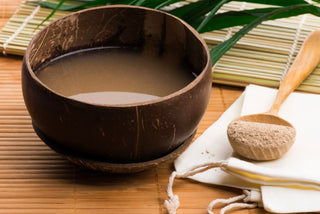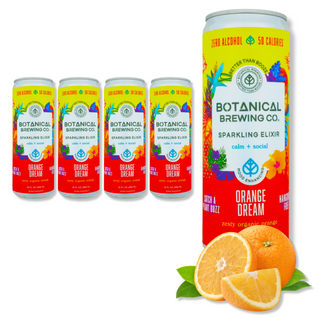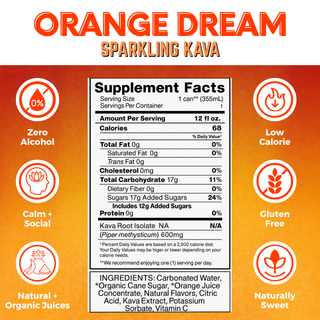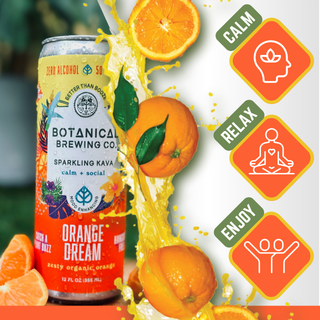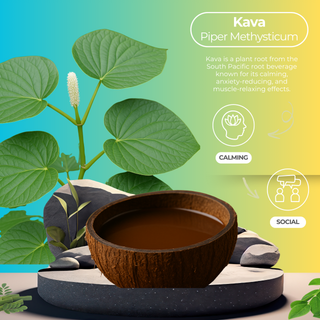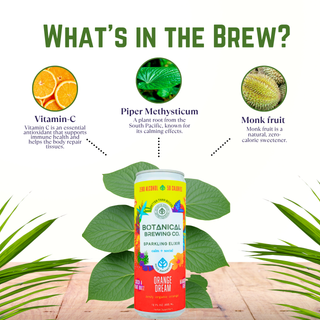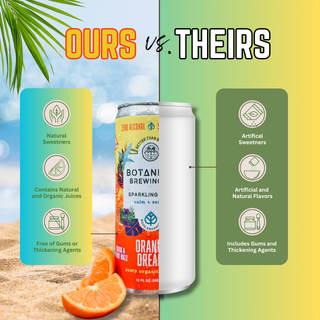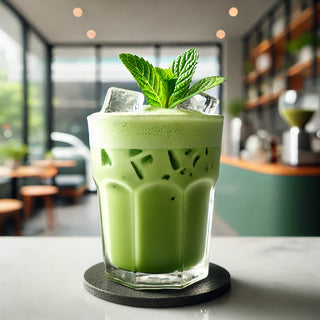In the depths of the Pacific Islands, a traditional drink with a rich cultural heritage has been gaining widespread attention – kava. This ancient beverage, derived from the roots of the kava plant (Piper methysticum), has been an integral part of ceremonial and social gatherings for centuries. As curiosity about this unique elixir continues to rise, the question of what is kava - echoes through various communities.
Kava, a non-alcoholic and mildly sedating drink, has long been revered for its ability to induce a sense of relaxation and sociability. Its popularity has transcended the boundaries of its island origins, captivating the interest of individuals seeking natural alternatives to unwind and connect with others. As the demand for understanding this enigmatic beverage grows, it becomes increasingly important to delve into the world of kava and unravel its complexities.
What is Kava?
At the heart of the inquiry of what is kava - lies the understanding that it is a non-alcoholic beverage derived from the roots of the kava plant (Piper methysticum). This remarkable plant, native to the islands of the South Pacific, has played a pivotal role in the cultural tapestry of the region for centuries.
The kava plant, also known as kava kava, is a shrub that thrives in the tropical climates of the Pacific islands. It produces large, green, heart-shaped leaves and thick, fleshy roots that are highly valued for their unique properties. These roots are the key ingredient in the traditional preparation of the kava drink, which involves grinding, soaking, and straining the root matter to extract the potent kavalactones – the active compounds responsible for kava's effects.
Originating in the islands of Vanuatu, Fiji, Tonga, and Samoa, the cultivation and consumption of kava have been deeply ingrained in the cultural fabric of these communities, serving as a ceremonial offering, a means of socializing, and a revered tradition passed down through generations.

What is Kava Drink?
Understanding what is kava drink requires delving into the traditional preparation methods that have been practiced for centuries. The process of creating this unique beverage is steeped in cultural significance and ritual.
To prepare the kava drink, the roots of the kava plant are carefully harvested, cleaned, and ground into a fine powder. This powder is then mixed with water or coconut milk in a special bowl or container, often made from wood or coconut shell. The mixture is then strained through a mesh or cloth to separate the liquid from the remaining fibrous material.
The resulting liquid is the kava drink, a murky, earthy-tasting beverage with a slightly peppery flavor. Its color can range from tan to light brown, depending on the variety of kava used and the preparation method. So, what is in kava drink? Essentially, it is a concentrated infusion of the active compounds found in the kava roots, known as kavalactones.
The consumption of kava is often accompanied by traditional ceremonies and rituals, particularly in the Pacific Islands. These ceremonies may involve:
- Chanting and storytelling
- Sharing the kava drink in a communal setting
- Observing specific protocols and etiquette
- Fostering a sense of community and social bonding
What is a Kava Bar?
As the popularity of kava continues to spread beyond its traditional roots, a new cultural phenomenon has emerged – the kava bar. But what is a kava bar? These establishments are dedicated spaces where individuals can gather to experience the unique effects of this ancient beverage in a social setting.
Kava bars typically offer a variety of kava strains and preparations, allowing patrons to explore the nuances of different varieties. These bars provide a welcoming environment where people can come together, sip on kava, and engage in conversation, much like traditional kava ceremonies in the Pacific Islands.
While kava bars have been a part of the cultural fabric in regions like Hawaii and Fiji for decades, their presence has also begun to expand in Western countries. Major cities across the United States, Europe, and Australia have seen a rise in the establishment of what is kava bar venues, catering to both curious newcomers and those seeking to reconnect with their Pacific Island heritage.
Beyond offering a unique beverage experience, kava bars have become cultural hubs, fostering a sense of community and serving as gathering places for people from diverse backgrounds. They provide a space for sharing stories, exchanging ideas, and celebrating the rich traditions associated with kava consumption.
What is in Kava?
The question of what is in kava - delves into the fascinating world of the plant's active compounds and their potential effects. At the core of kava's unique properties lies a group of naturally occurring compounds known as kavalactones.
Kavalactones are the primary active ingredients found in the roots of the kava plant. These lipid-soluble compounds are responsible for many of the reported effects associated with kava consumption. The major kavalactones present in kava include:
- Yangonin
- Desmethoxyyangonin
- Kavain
- Dihydrokavain
- Methysticin
While the exact mechanisms of action are still being studied, research suggests that kavalactones may interact with various neurotransmitter systems in the brain, potentially contributing to the reported anxiolytic (anti-anxiety), muscle-relaxant, and sedative effects associated with kava.
In addition to kavalactones, what is in kava also includes other compounds such as chalcones, flavokavains, and glycosides, which may contribute to the plant's overall properties and potential benefits.
It is important to note that the specific effects and benefits of kava may vary among individuals, and further research is needed to fully understand the mechanisms and potential applications of its active constituents.

What is Kava Root?
At the heart of the kava plant lies a remarkable part that has played a pivotal role in the traditions and cultural practices of the Pacific Islands – the kava root. But what is kava root?
The kava root is the underground stem of the Piper methysticum plant, characterized by its thick, fleshy appearance and distinct aroma. These roots can grow up to several feet in length and are typically harvested when the plant reaches maturity, around 4 to 8 years of age.
Kava roots have a cylindrical shape and are covered in nodules or knobs, giving them a gnarled and irregular appearance. Their outer skin is typically brown or grayish-brown, while the inner flesh ranges from yellow to pale green. When freshly harvested, kava roots exude an earthy, slightly pungent aroma.
In traditional Pacific Island cultures, what is kava root is revered for its role in various ceremonies, rituals, and medicinal practices. These roots have been used for centuries to prepare the iconic kava beverage, as well as in the form of:
- Tinctures and extracts for medicinal purposes
- Topical applications for skin conditions
- Ceremonial offerings and rituals
- Cultural exchanges and trade
The kava root holds a sacred place in the history and traditions of these island nations, serving as a link to their cultural heritage and a symbol of community, hospitality, and spiritual significance.
What is the Drink Kava Good For?
As the popularity of kava continues to spread, many individuals are curious about what is the drink kava good for and the potential benefits it may offer. While research on kava is still ongoing, several reported effects and uses have emerged over centuries of traditional consumption.
One of the most well-known benefits of what is kava good for is its ability to promote relaxation and reduce feelings of anxiety and stress. Many individuals use kava as a natural alternative to unwind after a long day or to alleviate mild to moderate anxiety symptoms. The kavalactones in kava are believed to interact with neurotransmitters in the brain, potentially contributing to a calming effect.
Additionally, kava has been traditionally used for its muscle-relaxant properties, making it a potential aid for individuals dealing with muscle tension or spasms. Some also report improved sleep quality when consuming kava, although further research is needed in this area.
While kava has been used for centuries in traditional Pacific Island cultures, it is important to note that there are potential risks and side effects associated with its consumption. Excessive or long-term use of kava has been linked to liver toxicity in some cases, particularly when consumed in combination with alcohol or certain medications.
Individuals must consult with healthcare professionals and follow recommended dosages and guidelines when considering what is the drink kava as a supplement or natural remedy.
What is Kava Used For?
Throughout its rich history, kava has played a multifaceted role in the cultural tapestry of the Pacific Islands, leading many to wonder, what is kava used for? Beyond its traditional consumption as a ceremonial and social beverage, the versatile kava plant has found diverse applications that span spiritual, medicinal, and therapeutic realms.
Traditionally, what is kava used for includes its central role in various ceremonies and rituals. In many Pacific Island cultures, kava is an essential component of important events, such as welcoming guests, celebrating rites of passage, and fostering community bonding. The act of sharing and consuming kava is deeply rooted in concepts of hospitality, respect, and social cohesion.
Moreover, kava has long been utilized for its potential therapeutic properties. Traditional healers and herbalists have incorporated kava into their practices, using it to treat a range of conditions, including:
- Anxiety and stress relief
- Muscle tension and pain relief
- Sleep disorders
- Menstrual cramps
- Urinary tract infections
In modern times, kava has gained recognition as a natural alternative for promoting relaxation and managing anxiety. Many individuals consume kava as a supplement or visit dedicated kava bars to experience its calming effects in a social setting.
Additionally, ongoing research explores the potential applications of kava and its active compounds in areas such as cognitive function, pain management, and even cancer treatment. However, further studies are needed to fully understand and validate these potential therapeutic uses.

Conclusion
As we delve into the world of kava, the question of kava what is - has been answered through a comprehensive exploration of this ancient and revered beverage. From its deep-rooted cultural significance in the Pacific Islands to its rise in popularity worldwide, kava has captivated the curiosity of many.
We've learned that kava is a non-alcoholic drink derived from the roots of the Piper methysticum plant, a shrub native to the tropical islands of the South Pacific. Its preparation involves traditional methods of grinding, soaking, and straining the roots to extract the potent kavalactones – the active compounds responsible for kava's unique effects.
Throughout history, kava what is - has been a central component of ceremonial and social gatherings, fostering a sense of community, hospitality, and cultural exchange. Beyond its traditional uses, kava has also been explored for its potential therapeutic benefits, such as promoting relaxation, reducing anxiety, and alleviating muscle tension.
As interest in kava continues to grow, it is crucial to approach its consumption with respect for its cultural significance and an understanding of its potential risks and side effects. Responsible use, consultation with healthcare professionals, and adherence to recommended guidelines are essential when exploring this ancient elixir.
Whether seeking a natural alternative for relaxation, embracing cultural traditions, or simply satisfying curiosity, the journey into the world of kava offers a unique opportunity to connect with the rich heritage of the Pacific Islands and experience the profound effects of this remarkable plant.


